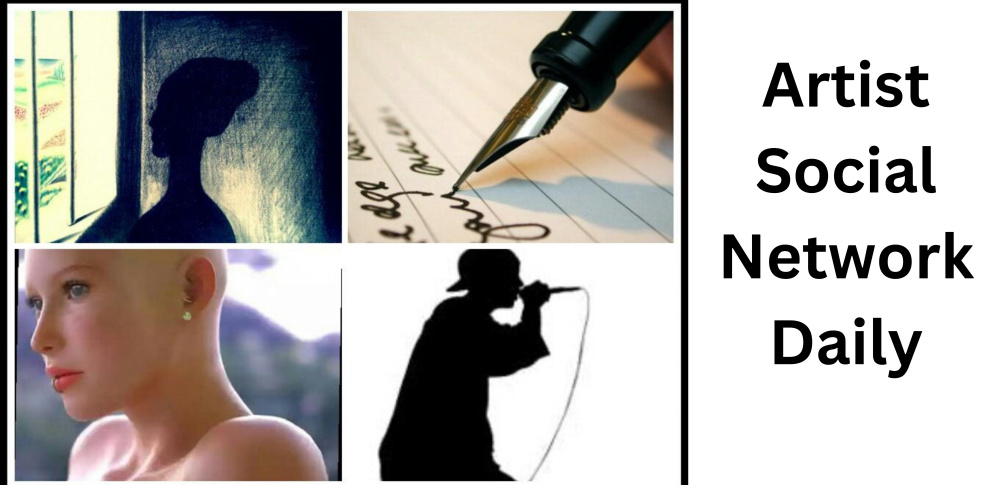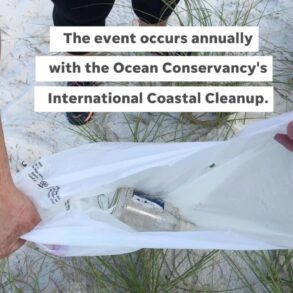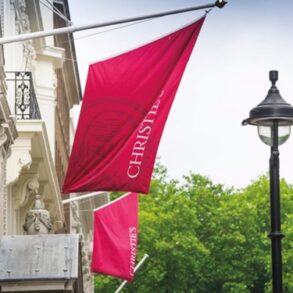It’s May, and the art world is gearing up for an onslaught of major industry events in New York. There are gallery openings this week, art fairs next week, and the semiannual marquee auctions the week following.
The auctions arrive at a fraught moment, and the trade is holding its breath. Have we hit the bottom? An answer remains elusive. U.S. President Trump has started a trade war, the stock market is volatile, interest rates have yet to be cut, and there are wars in Eastern Europe and the Middle East.
“It’s not an easy season to go to someone and say, Give me your $4 million painting. Now is a good time to sell,” said Evan Beard, head of Level & Co., a secondary market gallery on Manhattan’s Upper East Side that was set up by Masterworks, which offers fractional ownership of art.
The combined low estimate for the auctions at Christie’s, Sotheby’s, and Phillips are roughly the same as last May—about $1.2 billion. But looking at just this one figure would be deceiving. A lot has changed in the past 12 months.
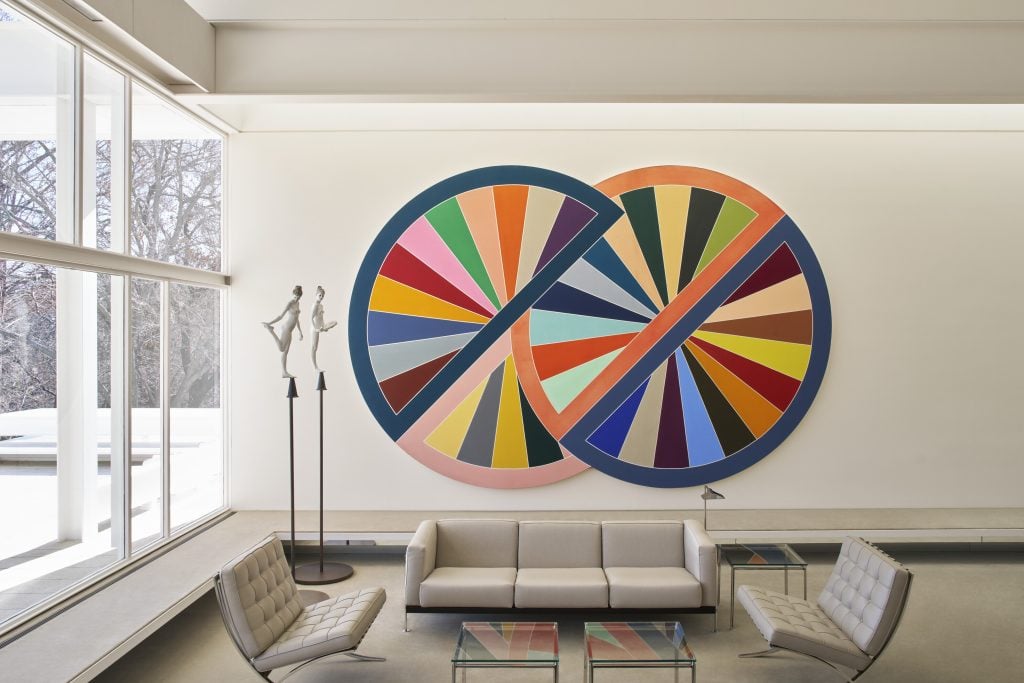
Installation view of Frank Stella, Firuzabad III (1970) in the living room of the Bass House. Photo: Martien Mulder, courtesy Christie’s.
First, there are more collections coming to market, which account for many of the top lots of the season. They are from estates, like those of Len Reggio and Anne Bass; living patrons, like Tiqui Atencio and Norman Braman; and dealers, like Daniella Luxembourg, Barbara Gladstone, who died last year, and Enrico Navara, who died in 2020. Institutions like the San Francisco Museum of Art, the Virginia Museum of Fine Arts, and the Phillips Collection are also selling to raise money for new acquisitions.
There’s also more art at the masterpiece price level, thanks to the Sheldon Solow’s $70 million Alberto Giacometti at Sotheby’s and Riggio’s $50 million Mondrian at Christie’s.
There’s less at the “hot” emerging level. Since the pandemic, the auction houses established dedicated sales for the wet paint flipped by speculators, and they front-loaded their evening sales with coveted new names every six months. No one is interested in that now, I hear.
“That was clearly a bubble that burst,” art advisor Wendy Cromwell said. “Remember the musical chairs game? That’s what it feels like when the music stops. I remember when this happened in the early 1990s. It takes time for the market to recover.”
Instead, buyers want historical material, whether blue chip or overlooked, Beard said. Consider that the second lot at Phillips’s evening sale, which has been a proving ground for younger artists for the past two decades, is a 1973 painting by Kiki Kogelnik (1935–97), a Pop artist whose star has risen in recent years, thanks to support from dealers like Simone Subal, Mitchell-Innes and Nash, and now Pace.
With so many major consignors named this season, I had to really hustle to find significant undisclosed sellers. As usual, the auction houses declined to comment on the identities of their clients.
Peter M. Brant
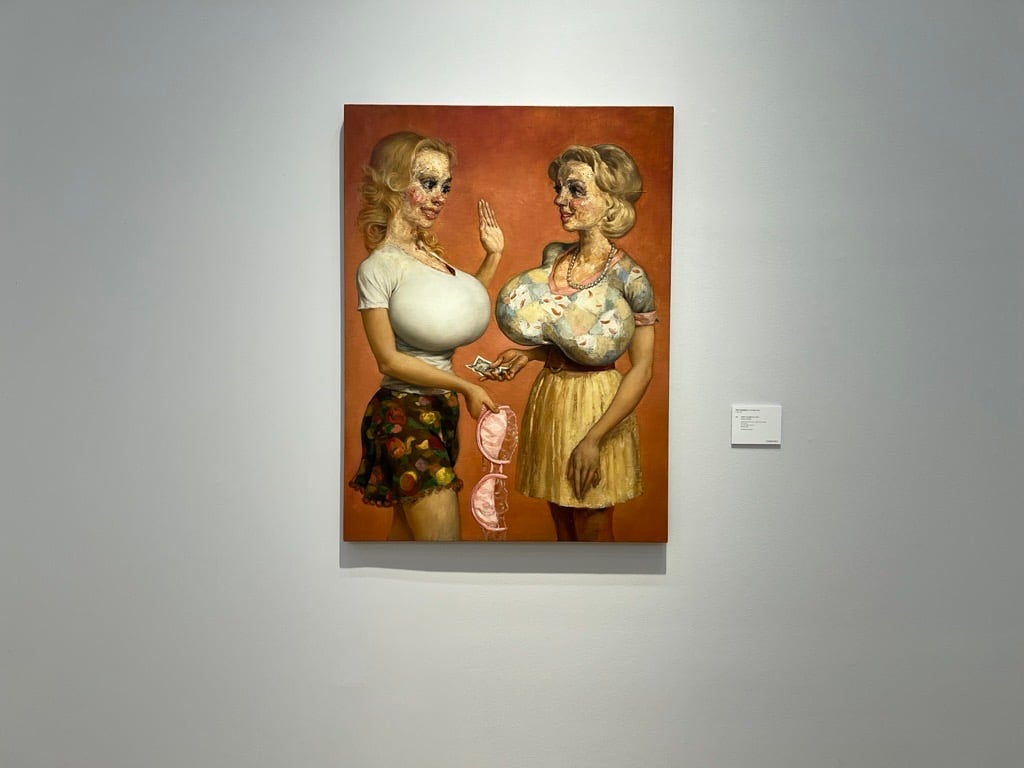
John Currin, Jaunty & Mame (1997), which is being sold by Peter M. Brant. Photo: Katya Kazakina
The passionate collector and savvy trader continues to prune his collection. Last November, he sold at least 11 works of art at both Christie’s and Sotheby’s. This month, he’s offloading more at Christie’s, based on UCC filings. I have already reported that Brant is the anonymous seller of Basquiat’s Baby Boom (1982), the cover lot of Christie’s 21st-century evening sale, and one of the top lots of the season, estimated at more than $20 million. But that’s not all.
The same Christie’s evening auction includes a John Currin painting that Brant is selling, Jaunty & Mame (1997), estimated at $2.5 million to $3.5 million. Christie’s catalog essay calls the work “technically virtuosic and thematically shocking.” It depicts two buxom women, and its sources and inspirations include 18th-century French Rococo painting and Hustler magazine. The women’s breasts are the focal point of the composition, but the thick impasto on the women’s faces is also dramatic.
Brant, a newsprint magnate, is also the seller of an untitled 1988 Christopher Wool that spells out “Helter Helter” in black letters on white ground. (It refers to “Helter Skelter,” a 1968 Beatle song whose title Charles Manson later adopted for sinister ends.) It’s estimated at $3.5 million to $5.5 million. He seems to be prepared to take a loss on the work, since he purchased it in 2016 for $5.5 million, also at Christie’s. At the time, it had been estimated at $6 million to $8 million. Wool’s volume of auction sales has collapsed since a 2015 peak.
Georg von Opel
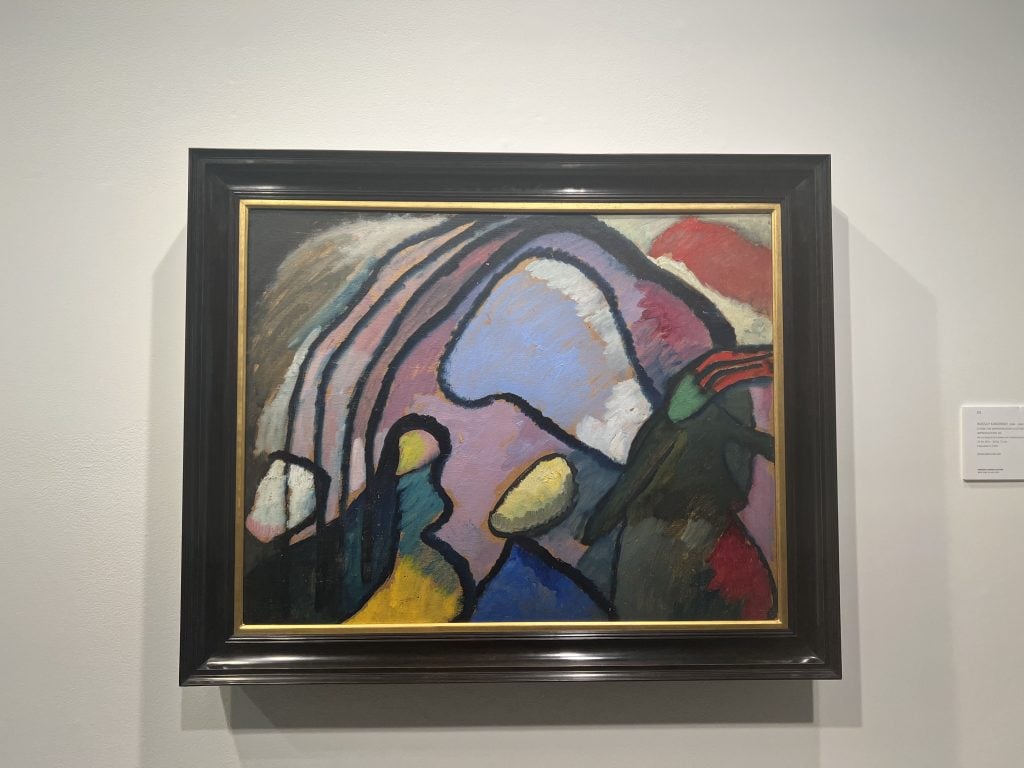
Wassily Kandinsky’s 1910 painting Studie für Improvisation 10. Photo: Katya Kazakina
The German-born billionaire, whose worth is estimated at $2.7 billion, is the owner and CEO Hansa AG, a Swiss-based investment management company. His fortune comes from Opel AG, the car manufacturer founded by his great-grandfather Adam Opel in the 1860s as a maker of bicycles and sewing machines.
Von Opel has bought a lot of art in the past decade, working with top advisors like Beaumont Nathan and later Amy Cappellazzo, according to market sources. His taste appears to be quite diverse, ranging from emerging art to Old Masters. At Sotheby’s, his art is designated as “Collecting Passions” and includes at least eight works, estimated at $28 million to $39 million, according to my calculations.
“Collecting Passions—Masterworks of German Expressionism from an Important Private Collection” includes Wassily Kandinsky’s 1910 painting Studie für Improvisation 10 (Study for Improvisation 10), estimated at $6 million to $8 million. It was acquired for $6.52 million at Sotheby’s in London in 2014.
The work is small potatoes compared to another Kandinsky that von Opel bought in 2017, also in London, for $41 million (the second-highest price for the pioneering Russian painter at auction). I heard from insiders that he resold that one privately for about $75 million, a staggering price, considering that Kandinsky’s auction record is $44.7 million.
Intriguingly, von Opel appears to have played a part in the stratospheric rise of abstract painter Lynne Drexler (1928–99). Back in 2022, the Farnsworth Art Museum in Rockland, Maine, deaccessioned works by Drexler from its collection, paving the way for ensuing market hysteria.
One of the Farnsworth paintings, Herbert’s Garden (1960) is back on the market, as part of a group designated “Collecting Passions—20th-Century Masterworks from an Important Private Collection.” The estimate is $1 million to $1.5 million, which could be seen as conservative since von Opel paid $1.5 million for the work in 2022, far above its $100,000 high estimate.
Rounding out the offerings from his collection is Michael Armitage’s Mpeketoni (2015), which is estimated at $2 million to $3 million and designated as “Collecting Passions—Art from the New Millennium from an Important Private Collection.” That may be a bargain compared to Armitage’s primary prices; in 2022, White Cube sold one of his works for $3 million to $4 million.
Mario Testino
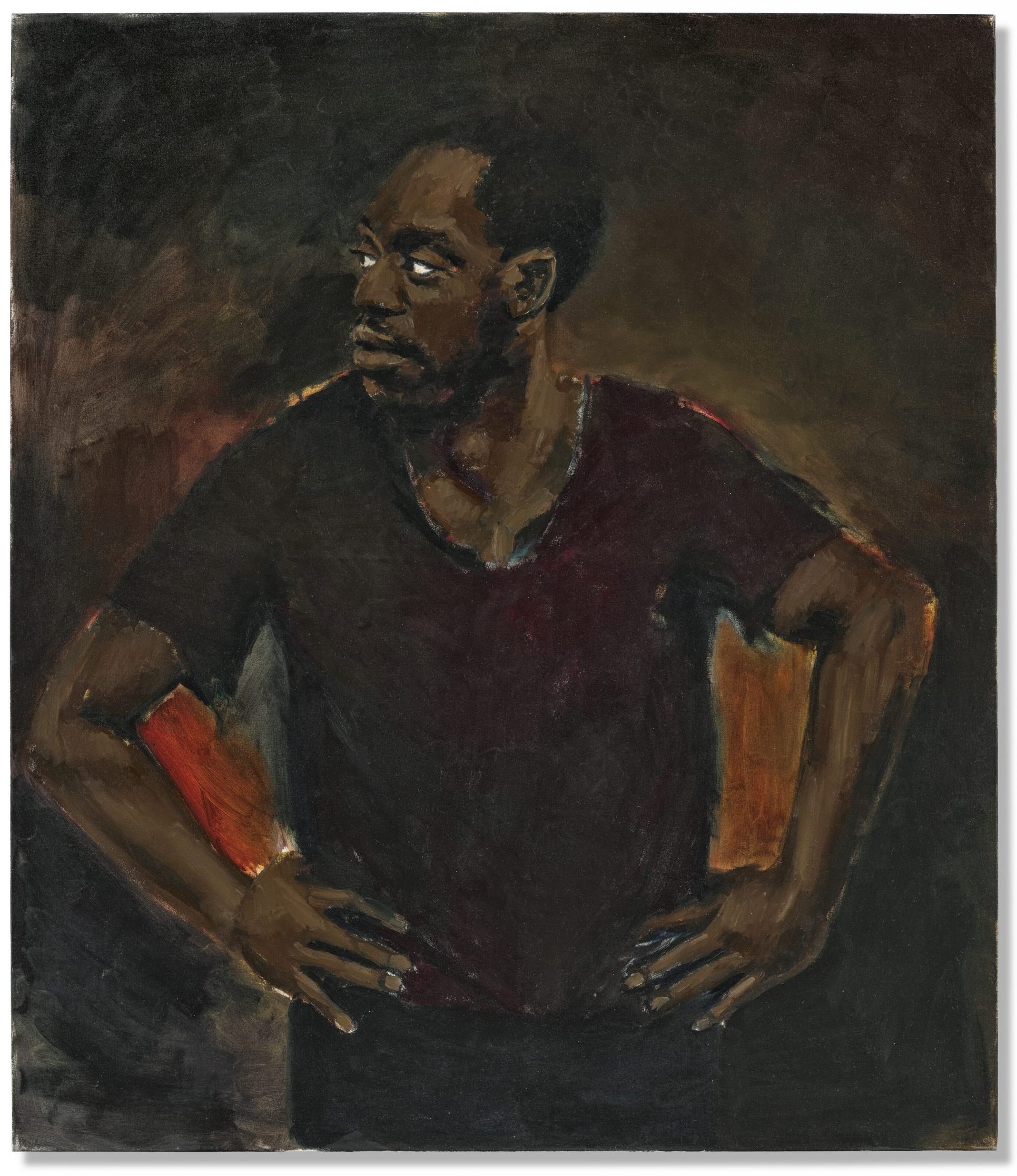
Lynette Yiadom-Boakye’s 2013 painting The Quickness. Photo: Katya Kazakina
The famous fashion photographer has been a major consignor at auction over the past year, and he’s still got more to sell. On May 14, he’ll try to offload a 2013 Lynette Yiadom-Boakye painting, The Quickness. He’s hardly a flipper, though, having owned it since 2014, according to Christie’s.
Yiadom-Boakye remains a shining light amid the emerging art carnage of the past two years. She was the top performer at auction in the ultra-contemporary segment last year, with 15 artworks generating $13 million, according to the Artnet Price Database.
A. Robert Towbin
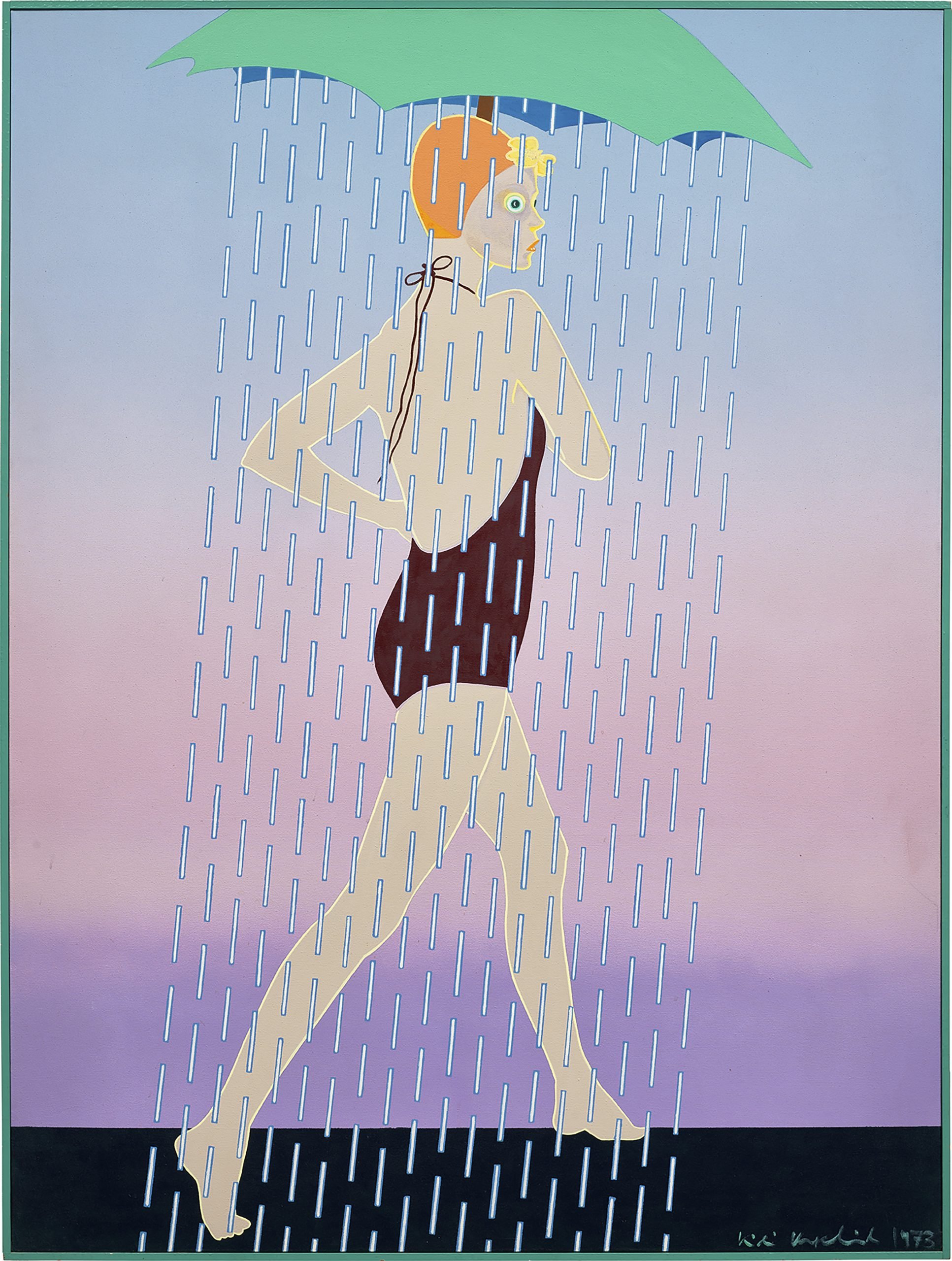
Kiki Kogelnik, Rainy (1973), which was in the collection of A. Robert Towbin. Courtesy: Phillips
Let’s return to Kogelnik. The spritely swimmer holding an umbrella in her 1973 painting Rainy is strategically positioned by Phillips to generate active bidding at the start of its evening sale. Estimated at $100,000 to $200,000, the work was originally part of the collection assembled by A. Robert Towbin, the Kiki Kogelnik Foundation said via the Pace gallery, which now represents the artist’s estate. Towbin’s heirs are selling, according to the provenance.
Bob Towbin, an investment banker and collector who died in 2021, bought numerous works by Kogelnik from 1970 to the 1990s, and many of them have been loaned for museum shows, a Pace spokeswoman told me. The Austrian-born artist is primed for a market reevaluation. Her auction record of just $269,790 was set in 2022, according to the Artnet Price Database.
The artist will be included in the upcoming “Sixties Surreal” exhibition at the Whitney this fall, according to Pace. The gallery is finalizing the contract on an acquisition by a major U.S. museum, the rep told me.
Watch this space!
Mera and Don Rubell
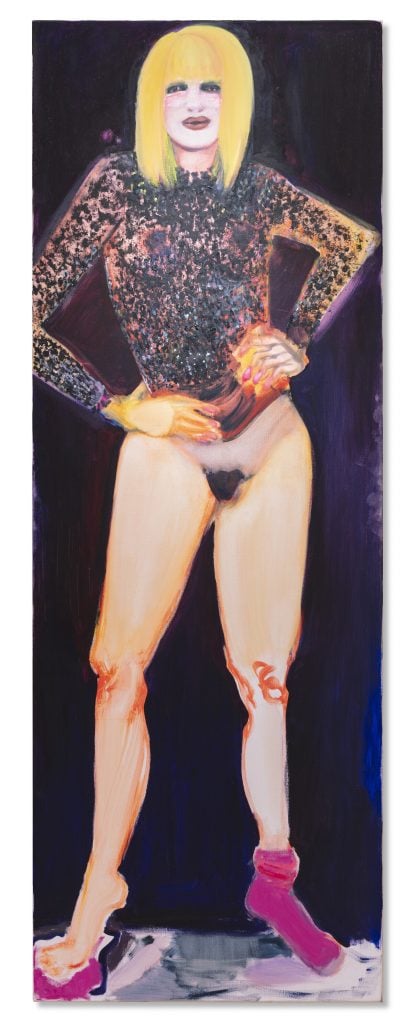
Marlene Dumas, Miss January (1997). Courtesy: Christie’s
Finally, in a big reveal during its press preview today, Christie’s unveiled a last-minute addition to its May lineup: a monumental painting by Marlene Dumas from the collection of the prominent Miami-based collectors. The arresting work, Miss January (1997), is more than 9 feet tall and was flown into town this week after the lots went live. Estimated at $12 million to $18 million, and backed with a third-party guarantee, it’s poised to set a new auction record for a living female artist, which is currently stands at $12.4 million, for a Jenny Saville. “It’s dripping, and oozing, and bursting out of the narrow frame,” Sara Friedlander, a deputy chairman at Christie’s said.
One other intriguing sight at Christie’s this morning: Hedge-fund billionaire and super-collector Kenneth C. Griffin making the rounds with Alex Rotter, the house’s newly appointed global president. As consignors cross their fingers, potential bidders are weighing their options.
This post was originally published on this site be sure to check out more of their content
